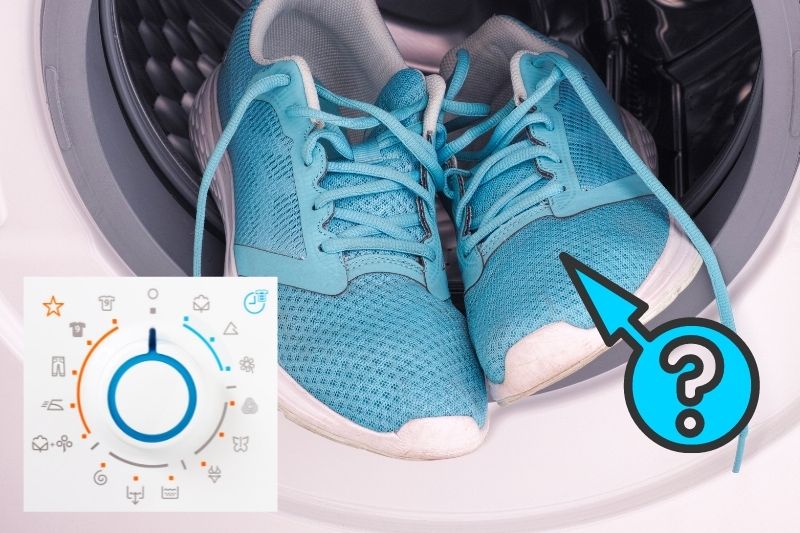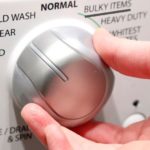No matter how well you treat a shiny, new pair of trainers, they’re going to get grubby. Unless you only wear them around the house, they will be pounding the filthy pavements and traipsing through muddy parks.
When the time comes to spruce them up, you might ask yourself: can I wash my trainers in the washing machine? Contrary to popular belief, many types of shoes, trainers and gym shoes included, can be washed in a washing machine.
It depends, of course, on the materials that the trainers are made from, but most synthetics are fine to take a spin.
The decision to put them through the washing machine also depends on how much you spent on them. If they have more of a luxury price tag, you should consult the care label or consider taking them to a professional cleaner. However, trainers such as converse or vans can definitely be machine washed.
Read on to find out what setting you should wash your trainers on in the washing machine, a step-by-step guide on how to wash them and some dos and don’ts.
How to Wash Trainers in the Washing Machine
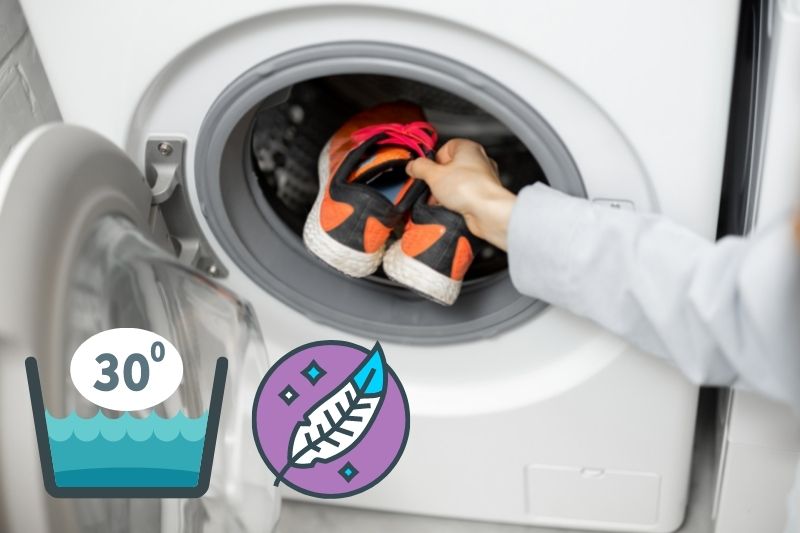
Trainers should be washed at low temperatures, on a delicate cycle with delicate detergent. Opt for a low spin speed, or no spinning at all.
Follow this step-by-step guide to ensure you’re washing your trainers safely:
- Before proceeding, check the care label inside the trainers or check online for the manufacturers’ instructions. The manufacturer may advise against machine washing, in which case you should follow their specific recommendations.
- Remove the laces, insoles (if possible) and any other detachable parts. It’s recommended not to put insoles in the washing machine as they can become misshapen. Consider hand-washing them instead.
- Scrub off excess dirt using a paper towel or a soft bristle brush. If there is a lot of caked on mud, you can wet the shoe and try to rinse off the rest of the mud with water. This step is important as you don’t want to damage your washing machine.
- Place the trainers and laces in a mesh laundry bag to stop them getting caught on the drum.
- Put the trainers into the washing machine with other larger items such as towels, hoodies or blankets. This not only stops your trainers from making a loud banging noise, but also prevents them from potentially damaging the drum.
- Choose a delicate wash setting and a low spin speed, or no spinning at all.
- Wash your trainers at 30 degrees Celsius or less.
- Use a gentle liquid detergent. Avoid using powdered detergent as powder has more trouble dissolving at lower temperatures and could therefore build up on the trainers.
- Once the wash cycle has finished, hang the trainers up to dry by attaching the back of the trainer to a washing line with the toe pointing down. Do not tumble dry or place directly on a radiator.
Can You Wash Trainers at 40 Degrees Celsius?
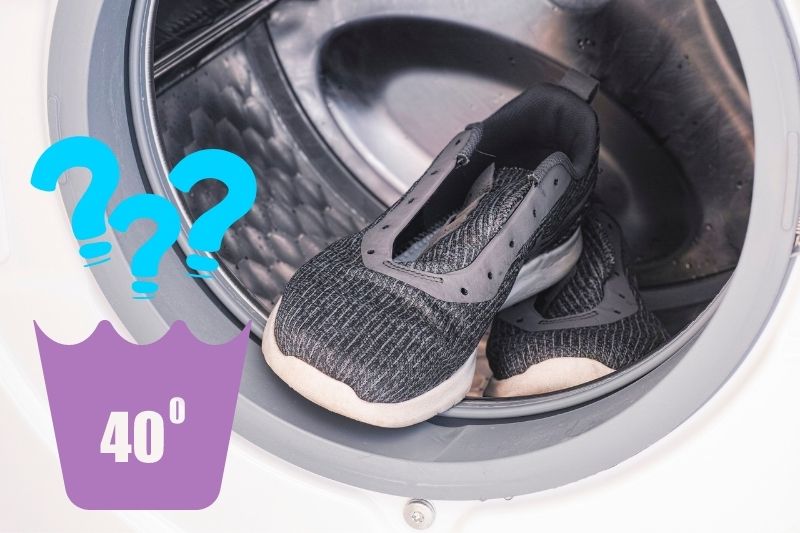
It may be tempting to opt for a warmer setting such as 40 or even 60 degrees Celsius as these temperatures are more efficient at cleaning and stain removal. However, trainers should never be washed on such a high heat. This is because the glue can melt and other parts of the shoe may become warped. This is also why you should never tumble dry them.
Your trainers will still get an effective wash at 30 degrees and washing at lower temperatures is better for the planet, so it’s a win-win!
What About Natural Materials?
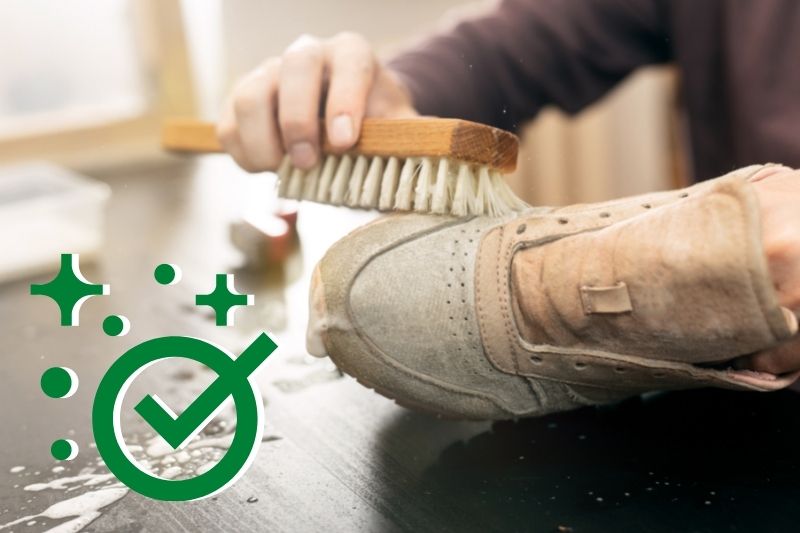
Most trainers are made from synthetic materials, but some can incorporate animal-derived products such as suede and leather, or even silk.
These materials should not be machine washed as they can become damaged by water. Instead, consider buying a specialised product, such as a leather or suede cleaner, or taking them to a professional dry cleaner.
You may also want to check the care label in case it recommends hand washing, which you can then do yourself.

In The Wash is your guide to the best laundry and cleaning products, tips and tricks. Our mission is to solve the UK’s cleaning and laundry dilemmas!
